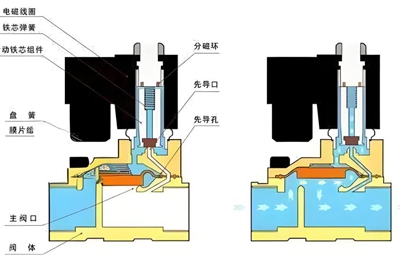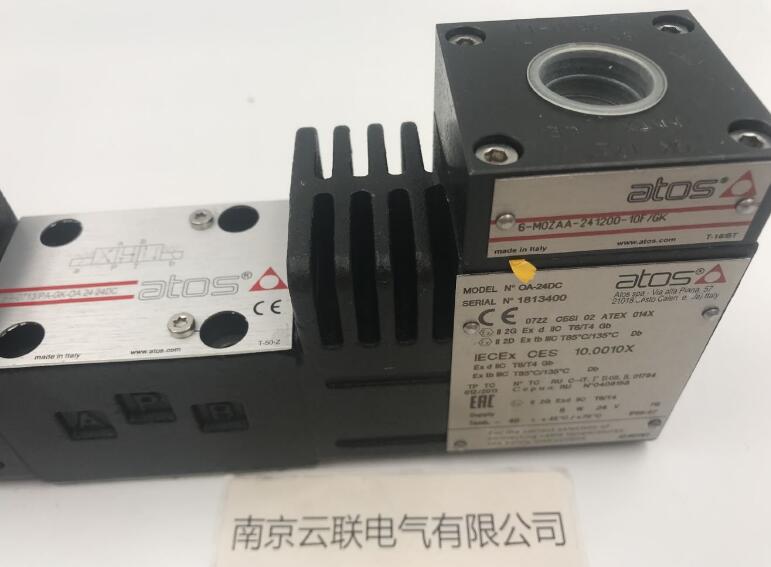
Telephone
025-52791167,52791168
13390905858
13390905858

Key points and applications of distinguishing positive and negative directions of solenoid valves
As an important component for controlling fluid flow, the positive and negative differentiation of solenoid valves is of great significance in practical applications. Having a deep understanding of the key points for distinguishing between positive and negative solenoid valves, combined with practical application cases, can help us better grasp this key technology and ensure that solenoid valves perform at their best in various systems.
The key to distinguishing between positive and negative solenoid valves lies in a deep understanding of their structure and working principle. Different types of solenoid valves, such as direct acting, pilot operated, step-by-step direct acting, etc., have different internal structures and working modes, which also determine their characteristics in distinguishing between positive and negative directions. Taking a direct acting solenoid valve as an example, it opens and closes the valve by directly driving the valve core through an electromagnetic coil. In this type of solenoid valve, the flow direction of the fluid is relatively simple, and can generally be determined by observing the direction of movement of the valve core and the markings on the valve body. When the electromagnetic coil is energized, the valve core will be attracted by magnetic force, thereby opening the valve, and fluid will flow in from the inlet end and out from the outlet end.
For pilot operated solenoid valves, the distinction between positive and negative directions is more complex. Pilot operated solenoid valve uses a pilot valve to control the opening and closing of the main valve. The flow direction of the fluid is not only related to the main valve, but also closely related to the working principle of the pilot valve. In a pilot operated solenoid valve, there is usually a control chamber that drives the movement of the main valve spool by controlling the pressure changes inside the chamber. Therefore, when distinguishing between positive and negative, it is necessary to consider the position of the control chamber and the flow direction of the fluid in the pilot valve. Generally speaking, the inlet end of the pilot valve is connected to the pressure source, while the outlet end is connected to the control chamber of the main valve, achieving control of the main valve through this connection method.
In addition to its structure and working principle, the application scenarios of solenoid valves also affect their positive and negative differentiation. In some systems with strict requirements for fluid flow direction, such as chemical production, food and beverage processing, the positive and negative installation of solenoid valves must be accurate, otherwise it may lead to product quality problems or safety accidents. For example, in chemical production, if the solenoid valve is installed incorrectly, it may lead to mixing errors of different chemicals, resulting in dangerous chemical reactions. In food and beverage processing, incorrect installation may lead to food contamination, affecting product quality and safety.
Below is a practical application case to further illustrate the importance of distinguishing between the positive and negative directions of solenoid valves. In a sewage treatment system, multiple solenoid valves are installed to control the flow and treatment process of sewage. One of the solenoid valves is used to control the flow of sewage from the sedimentation tank into the filtration tank. Due to the negligence of the installation personnel, the solenoid valve was installed upside down, resulting in sewage not being able to flow into the filtration tank normally, but instead flowing back from the filtration tank to the sedimentation tank. This not only affects the efficiency of sewage treatment, but may also lead to the sludge in the sedimentation tank being brought back to the filtration tank, blocking the filtration equipment. After inspection and reinstallation of the solenoid valve, the problem was resolved and the sewage treatment system resumed normal operation.
In practical applications, in order to ensure the correct installation and positive and negative differentiation of solenoid valves, some details need to be paid attention to. For example, before installing the solenoid valve, a comprehensive inspection should be conducted, including visual inspection, labeling inspection, performance testing, etc. During the installation process, it is necessary to strictly follow the product manual and installation drawings to ensure that the installation direction of the solenoid valve is correct. At the same time, it is necessary to regularly maintain and upkeep the solenoid valve, check its working status and performance, and promptly identify and solve problems.
In summary, a thorough analysis of the key points for distinguishing between positive and negative electromagnetic valves, combined with practical application cases, can help us better understand and master this key technology. In practical applications, it is important to pay attention to the positive and negative differentiation of solenoid valves, and strictly follow the requirements for installation and use to ensure the normal operation of solenoid valves and the stable operation of the system.

telephone:025-52791167,52791168
Fax:025-52791169
Phone :13390905858
mailbox:njxj888@163.com skype:yluedq
Address:Jiangning Shuanglong Avenue No.1222 Nanjing, Jiangsu. China P.O. 211100